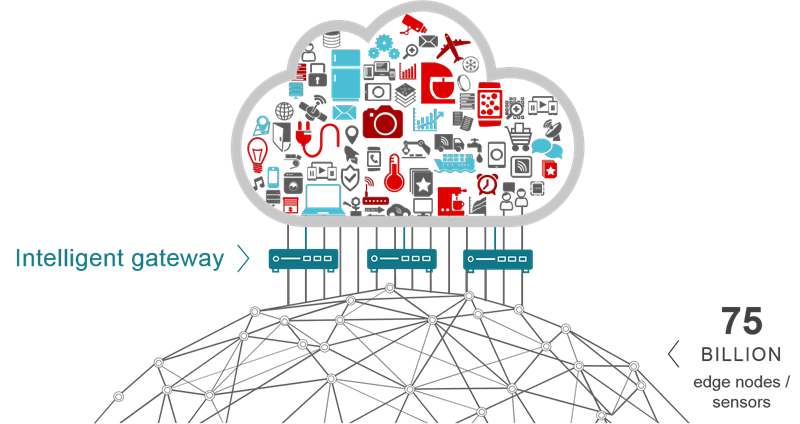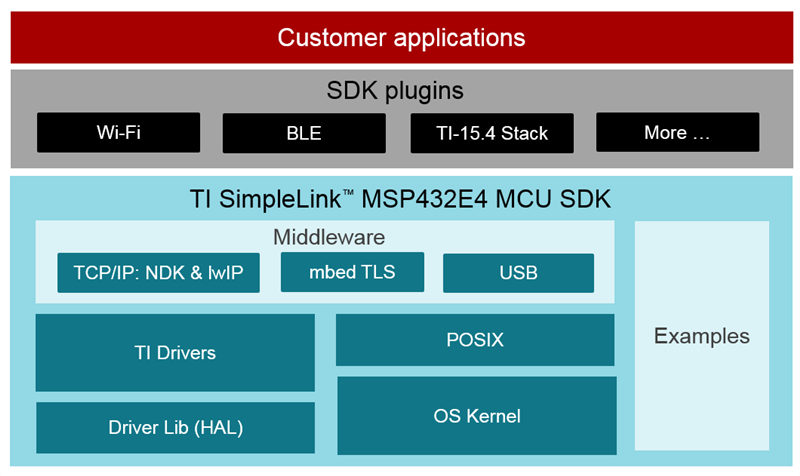SSZT872 november 2017 MSP432E401Y , MSP432E411Y
Analyst firm IHS Markit predicts that by 2025, the Internet of Things (IoT) will comprise as many as 75 billion connected things. To reach this large number, manufacturers will need to merge their legacy systems (with decades-old infrastructures comprising mostly wired protocols) with always-evolving wireless connectivity standards and technologies.
Whether in a factory or building, there is potentially a massive benefit to aggregating, managing and analyzing edge-node data in the cloud. However, connecting devices with varying communication protocols together – and up into the cloud – poses one of the largest barriers to IoT network development. With an intelligent gateway (Figure 1), you can simplify end-node designs, reduce network traffic and offer faster decision-making without connecting directly to the internet.
 Figure 1 The Intelligent Gateway Is a
Solution to Help Manage the 75B Connected Things
Figure 1 The Intelligent Gateway Is a
Solution to Help Manage the 75B Connected ThingsGateways offer an elegant way to simplify a sensor network by supporting the multiple ways that end nodes natively connect. Some wired end nodes might use Building Automation and Control network (BACNet), IO-Link, 4-20mA or Highway Addressable Remote Transducer (HART), depending on factory or building automation systems. Some wireless end nodes in the network might use Wi-Fi® or Thread, which natively offers an internet protocol (IP) address, while others might use non-IP-based protocols such as Bluetooth® low energy or various Sub-1 GHz protocols.
An intelligent gateway can mitigate the variety and diversity of devices by consolidating data from disparate sources and interfaces and bridging them to the internet. This means that the individual nodes do not need to bear the complexity or cost of a high-speed internet interface in order to connect to the cloud.
Merging Wired and Wireless Connectivity
Equipped with a 120 MHz central processing unit (CPU) engine, 1MB of flash and 256kB of random access memory (RAM) – with the option to expand the memory via external memory interface – the MSP432E4 also provides ample processing power to help aggregate, filter and process sensor data. This enables the intelligent gateway to make smarter decisions locally, react quickly and minimize internet traffic by communicating only necessary data to the cloud.
 Figure 2 SimpleLink MSP432E4 Ethernet
MCU Block Diagram
Figure 2 SimpleLink MSP432E4 Ethernet
MCU Block DiagramThe innovation packed into MSP432E4 MCUs, complemented by a common development environment across the SimpleLink platform, will enable you to design a robust intelligent gateway and connect more sensors to the cloud.
Additional Resources
- Get started with MSP432E4 MCUs today with the MSP-EXP432E401Y.
- For more information on intelligent gateways, download the white paper, “Building a gateway from sensors to the cloud.”
- Get connected to the cloud by walking through this SimpleLink Academy module.
- Download the SimpleLink MSP432E4 MCU datasheet.